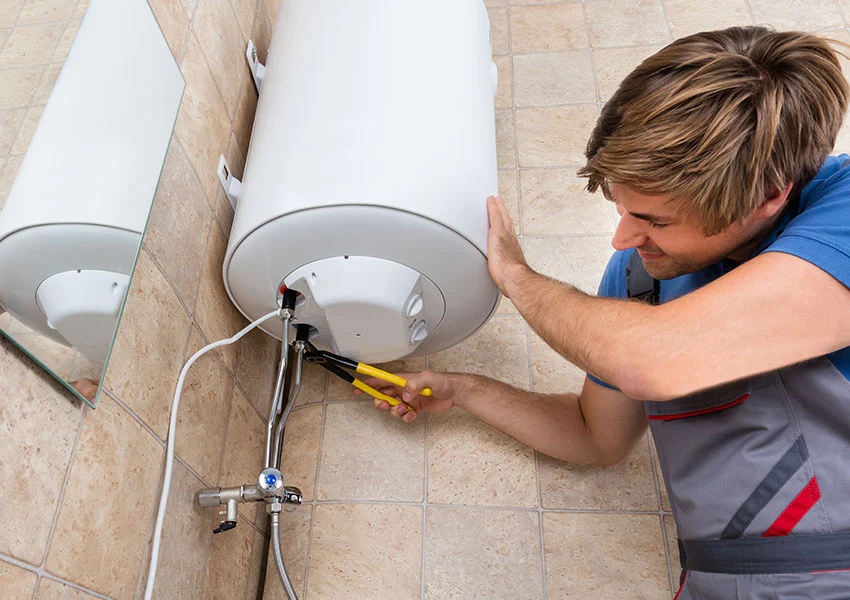Professional Advice for Maintaining Your Home's Hot Water SystemImportant Care Strategies for Your Home's Hot Water System
Professional Advice for Maintaining Your Home's Hot Water SystemImportant Care Strategies for Your Home's Hot Water System
Blog Article
In this article on the next paragraphs you can get a good deal of incredibly good points in regards to Tips on Maintaining a Water Heater.

Hot water is necessary for daily comfort, whether it's for a revitalizing shower or cleaning dishes. To ensure your warm water system runs efficiently and lasts longer, normal maintenance is crucial. This article provides functional pointers and insights on exactly how to keep your home's hot water system to prevent disturbances and costly fixings.
Introduction
Preserving your home's warm water system might seem overwhelming, yet with a few simple steps, you can guarantee it operates efficiently for years ahead. This guide covers whatever from understanding your hot water system to do it yourself maintenance ideas and knowing when to employ professional assistance.
Relevance of Maintaining Your Hot Water System
Normal maintenance not only expands the lifespan of your warm water system yet also guarantees it runs efficiently. Ignoring upkeep can lead to reduced effectiveness, greater power bills, and also early failure of the system.
Indications Your Hot Water System Requirements Upkeep
Knowing when your warm water system requires attention can stop significant issues. Look out for indications such as irregular water temperature level, unusual noises from the heating unit, or rustic water.
Recognizing Your Hot Water System
Before diving into upkeep jobs, it's helpful to recognize the basic components of your hot water system. Normally, this consists of the hot water heater itself, pipelines, anode poles, and temperature controls.
Monthly Maintenance Tasks
Routine regular monthly checks can aid capture small issues before they escalate.
Flushing the Water Heater
Flushing your water heater removes sediment accumulation, enhancing effectiveness and extending its life.
Monitoring and Changing Anode Rods
Anode poles protect against deterioration inside the container. Inspecting and changing them when broken is critical.
Checking and Changing Temperature Settings
Adjusting the temperature setups guarantees ideal performance and safety.
DIY Tips for Maintenance
You can perform several maintenance tasks yourself to keep your warm water system in leading problem.
Looking for Leaks
Frequently check pipes and connections for leaks, as these can lead to water damage and greater costs.
Checking Stress Relief Valves
Evaluating the pressure relief valve guarantees it works properly and prevents too much pressure build-up.
Protecting Pipes
Shielding hot water pipes minimizes heat loss and can conserve energy.
When to Call a Professional
While do it yourself upkeep is advantageous, some concerns need professional know-how.
Complicated Concerns Needing Professional Help
Instances include major leakages, electrical troubles, or if your water heater is continually underperforming.
Routine Specialist Maintenance Conveniences
Expert upkeep can include detailed inspections, tune-ups, and guaranteeing conformity with safety requirements.
Final thought
Regular upkeep of your home's hot water system is crucial for effectiveness, longevity, and price savings. By adhering to these suggestions and knowing when to look for professional aid, you can guarantee a trustworthy supply of hot water without unanticipated interruptions.
How to Maintain an Instant Hot Water Heater
Before tinkering with your hot water heater, make sure that it’s not powered on. You also have to turn off the main circuit breaker and shut off the main gas line to prevent accidents. Also turn off the water valves connected to your unit to prevent water from flowing into and out of the appliance. 2. When you’re done, you have to detach the purge valves’ caps. These look like the letter “T” and are situated on either side of the water valves. Doing so will release any pressure that has accumulated inside the valves while at the same time avoid hot water from shooting out and burning your skin. 3. When the purge valves’ caps are removed, you have to connect your hosing lines to the valves. Your unit should have come with three hoses but if it didn’t, you can purchase these things from any hardware or home repair shops. You can also get them from retail stores that sell water heating systems. Read the user’s manual and follow it to complete this task properly. When the hosing lines are connected, open the purge port’s valves. 4. You should never use harsh chemical cleaners or solutions when cleaning your unit. Make use of white vinegar instead. It should be undiluted and you’ll probably use about 2 gallons. 5. Now flush your water heater. This task should probably take about 40 minutes. We can’t give you specific directions for this because the procedure is carried out depending on the type, model and brand of your heater. With that being said, refer to the user’s manual. 6. When you’re done draining the unit, you have to turn off the purge port valves again. Remove the hosing lines that you earlier installed on each of the water valves. Put the valve caps (purge port) back in their respective places and be very careful so as not to damage the rubber discs that are found inside these caps. 7. Now that everything’s back in place, check your user’s manual again to find out how to reactivate your water heating system. 8. Once it is working, turn one of your hot water faucets on just to let air pass through the heater’s water supply pipes. Leave the tap on until water flows smoothly out of it. https://www.orrplumbing.com/blog/2014/september/how-to-maintain-an-instant-hot-water-heater/

As a person who reads about Tips For Maintaining Your Hot Water Heater, I assumed sharing that section was a good thing. Do you know someone else who is interested by Tips on Maintaining a Water Heater? Be sure share it. Thanks a lot for your time. Don't forget to pay a visit to our blog back soon.
Schedule And Pricing Report this page